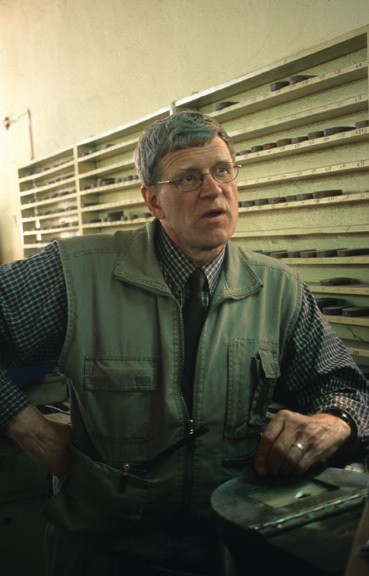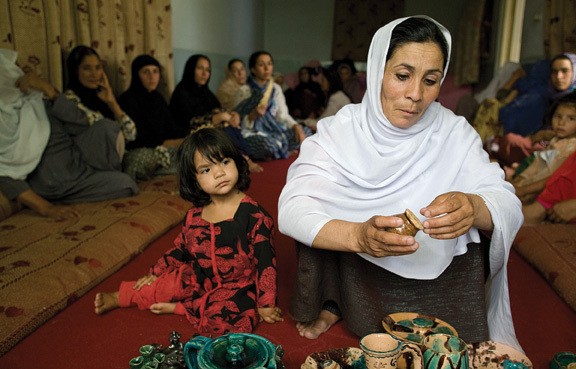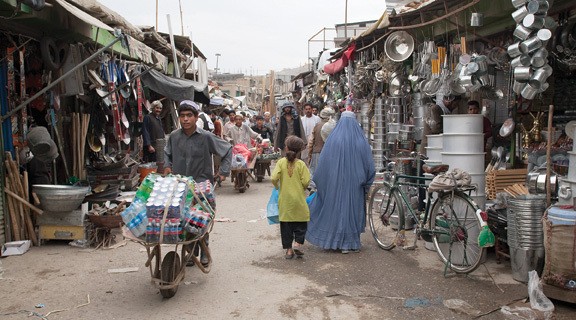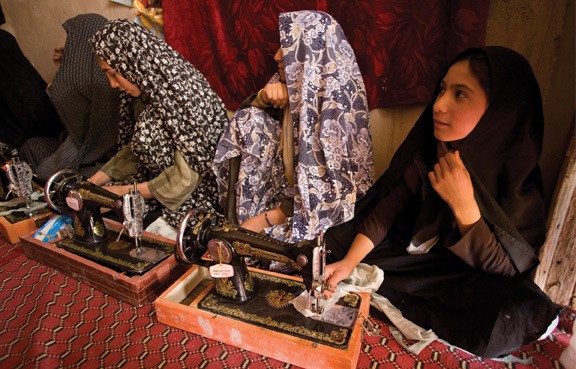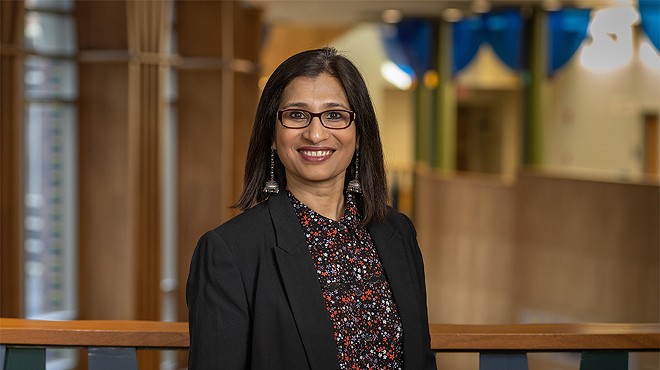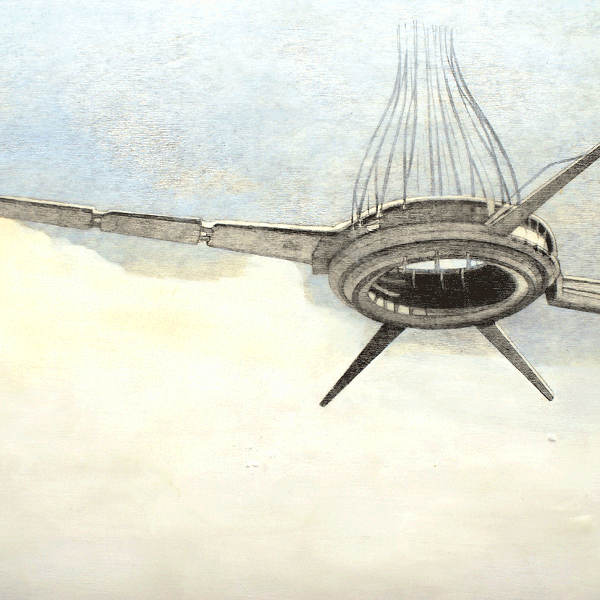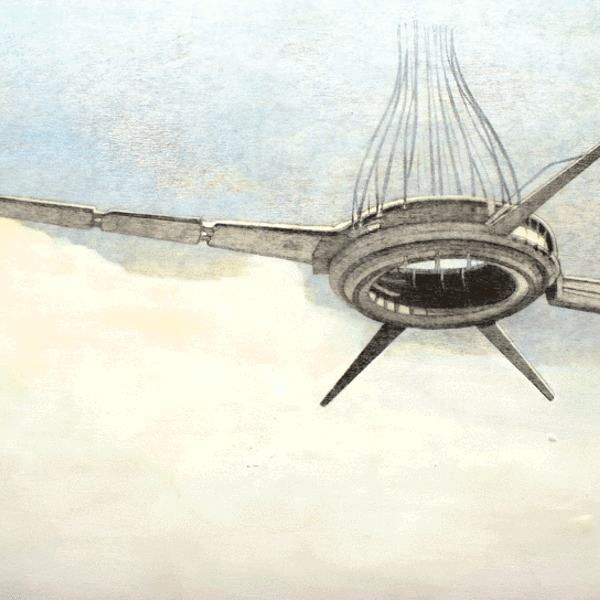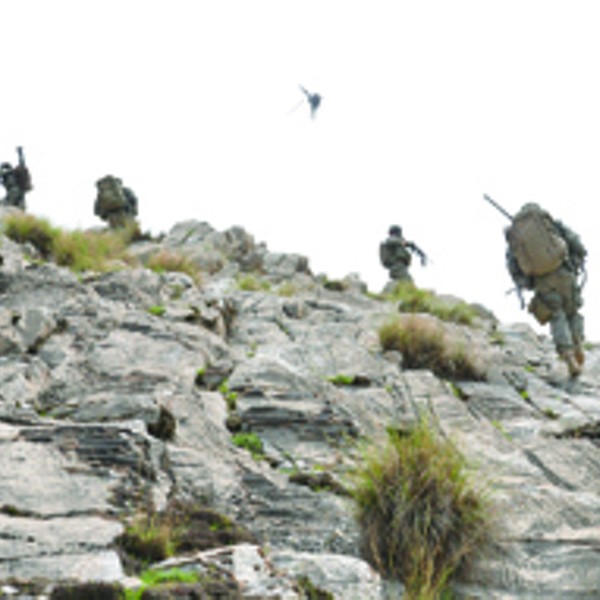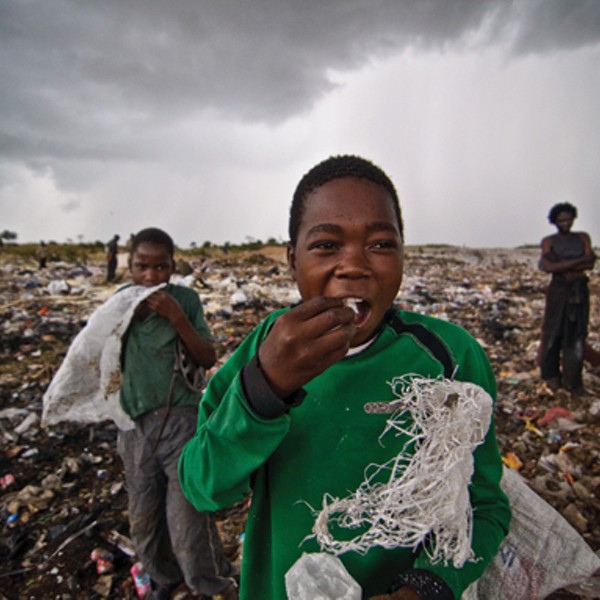On August 7th of this year the New York Times reported that 10 members of an unpaid volunteer team of doctors, nurses, and technicians making their way back to Kabul after delivering free health care in a remote region of Afghanistan were murdered in cold blood. Unidentified gunmen sporting long red beards herded the group into the woods, lined them up, and one-by-one shot all but one dead. The lucky man, an Afghan, said he was spared because he had dropped to his knees while reciting from the Koran.
Dr. Tom Little, a Delmar-based ophthalmologist, was one of the medical team members killed. Dr. Tom began doing outreach work in Afghanistan in 1976, lived in Kabul raising his family through the Soviet invasion, and had spent the last three decades providing eye care to Afghans in need via the National Organization of Ophthalmic Rehabilitation Eye Care Program (NOOR), Afghanistan’s singular eye care program. NOOR’s mission has been to train Afghans to run the program and to carry out the surgical eye camps held in remote areas of the country where little to no aid is present.
In our November 2005 issue, photojournalist and activist Connie Frisbee Houde profiled Dr. Tom, a childhood playmate, after traveling with NOOR in Afghanistan and documenting their singular eye care program.
The news of Dr. Tom’s death caused me to remember Connie’s e-mail earlier in the year announcing her trip to Afghanistan for the month of August. Unsure if she said she’d be traveling once again with Dr. Tom or not, I began searching her out on the Internet. It was with great relief I found her alive and well in Herat, where she had just heard of the killings. Unable to comment at the time, I caught up with Connie in October and asked her to share her experience in the wake of this incomprehensible crime.
Lorna Tychostup: Did you ever think something like this would happen?
Connie Frisbee Houde: At Tom’s memorial service, a person was describing what Tom had said when he began working in Afghanistan: You know your life is at risk. You have to just make peace with that and go on and do your work or you can drive yourself nuts worrying about it every time you walk out the door.
From everything I’ve read, Tom was very low key. Yet he did so much and endeared so many people to him.
That’s the kind of guy he was. You could rely on him. You knew he knew what he was doing and he just quietly went about and did his work. He didn’t make waves and yet in other ways he did. Early on, he set up a program of doing the eye camps and going out into rural areas. I was told recently that [NOOR] probably won’t be doing them anymore because they don’t have anyone like Tom. He spearheaded the program and made it work.
When I heard the news I felt the enormity of how this act would affect Afghanistan in a major way. This wasn’t just some aid organization that had a couple of people killed. This was a team of people who were going to places where no one else would go, where most major aid agencies don’t reach into and they were really affecting peoples lives for the better and this was just a tragedy for the country of Afghanistan.
The effect of this is going to be in the rural areas that are no longer going to be receiving the aid. There was an article that came out from the UN Office for the Coordination of Humanitarian Affairs that said the murders were going to affect how they operate, and how much they go out and do hands-on work. People are much more afraid, more wary of doing what they have been doing.
One of the big debates right now is how aid organizations in Afghanistan are being targeted and attacked, and how that will affect the future of their work.
Yes. How can they continue to operate? A major problem in Afghanistan is that you’ve got so many different groups that no one knows who has killed who. BBC journalist Kate Clark wrote that the Taliban group acting as a shadow government in the Nuristan area condemned the killings. So one Taliban group can say, “According to our code, we don’t assassinate aid workers.” Yet you’ve got another group that might also be called Taliban who does. Some are so fanatical they say, “Let’s kill all the infidels” and bang, it’s done, no questions asked. The one member of Tom’s group who survived, an Afghan, said the killers were not Afghans.
Yes, the Washington Post reported that the survivor, Saifullah, “could not place all the men as Afghans—some seemed to speak in code and others in Urdu or a language he did not understand, and that other foreigners, including Arabs, Chechens, Uzbeks, and Pakistanis, sometimes fight with the Taliban in Afghanistan.”
That’s what makes it so complicated—there are all these different groups that are there. There’s not any one group that you’re up against.
You have a several year history of working in Afghanistan.
Yes. This was my fifth trip. I started going there in 2003 and got involved working with Tom shortly after that. I had known Tom, what he was doing, and his program resonated with me. I also felt it was a way that I could get to travel into other areas within Afghanistan other than just being in the city. So after my first trip, I traveled with Tom and some of his other team members documenting the work they were doing and got to see more of Afghanistan than I would have if I traveled on my own. When I went there last fall, I traveled with Code Pink and visited a number of women’s organizations and then continued to travel with Tom shortly after that. In the process of my involvement with Afghanistan I got to the point where I felt like I wanted to do something more hands-on and real. So I began working with Fahima Vorgetts, who works with Women for Afghan Women (WAW), an organization out of New York City. Fahima directs what she calls the Afghan Women’s Fund, a part of WAW, which she uses to build schools, clinics, and wells. The fund also helps start up women cooperatives and literacy classes in any village that will work with her. So a group of us in Albany that belong to Women Against the War took on a village, one that Fahima picked in Logar Province, south of Kabul. They needed a well so we raised $10,000 that funded the one we put in this past June. My goal this trip was to visit the villagers and see for myself the progress on the well, what the villagers thought about it, and what effect it had on them. But after the murders I didn’t go to the village because I was told it wasn’t safe for me to do so. Not only was I a little more apprehensive than I had been previously, but I was also asked by Tom’s family not to go.
You had originally planned to stay in Afghanistan for a month. Did you?
No, I stayed only three weeks. I was traveling with another woman, Diana Tacey, from the ChildLight Foundation. She’s been working in Afghanistan since 2003 doing small projects, working with women in prisons—particularly in Herat, Jalalabad, and Kabul. I was planning to document her work. On the fifth day we were in Herat and heard about Tom and the nine other workers being killed. Diana was headed on to Mazar-i-Sharif and I decided to go back to Kabul to be there when Tom’s wife Libby arrived and for the memorial service. Also, my family did not want me to travel anymore and I was trying to juggle how to stay in Afghanistan without making them go nuts. At that point I didn’t know whether I was targeted too because of my relationship with Tom and I didn’t know enough about what was happening. I felt more comfortable once I got to Kabul.
You were nervous about your own personal safety?
Yes. So I stayed in Kabul at the team house of the International Assistance Mission [IAM], the organization Tom’s program—the National Organization for Ophthalmic Rehabilitation [NOOR]—was part of. So I was close to what was happening, in relationship to the Littles, and what the other people who work for NOOR were doing. A lot of people from outside of Kabul were coming for the memorial service. I met with the head of IAM and got his view of the situation—people were working really hard to try to sort everything out. Nobody really knew exactly what was happening. They had to retrieve the bodies. The FBI was involved and wanted all the bodies to return to the United States. The family wanted Tom’s body to stay in Afghanistan along with Dan Terry, another older individual that was murdered. Eventually the FBI let the bodies stay in Kabul and get buried there.
Dan Terry had been in Afghanistan for 40 years. Tom had been there for 34. They both had wanted to be buried in Kabul and were buried in what is known as the British Cemetery. Approximately 150 Britons are buried there, along with a few others who have died in Afghanistan over the last 10 years.
So the rest of your time there was involved in activities related to Tom’s death?
I also met with Fahima and traveled with her north of Kabul for a couple of days documenting the work she does there. Two of the villagers were from Mir Taqi Shah, the village where we put in the well. So I got to talk to them about the affect of the well on the village.
Afghanistan is the hot topic right now. We’ve moved a lot of troops out of Iraq and into Afghanistan, where the next push is now taking place. The big debate is why don’t we pull out? On one side people argue that Afghanistan is a hellhole that will never be tamed. Yet, in the past we went in, successfully supported an insurgency against the Soviets, and when the Soviets finally gave up we pulled out and didn’t follow through with aid and reconstruction. The other side of the debate asks, “How can we pull out without addressing the needs of the Afghan people, helping to rebuild the infrastructure, and get the country up and running on its feet?” What do you think should happen?
I wobble back and forth on that. If you talk to Afghans who live in the city and are benefiting from working for contractors and nongovernmental organizations, they don’t want the NATO forces or the US to leave, because then they would be out of work. But if you talk to people out in the rural areas, they will tell you that the Taliban come at night, give them night letters [written threats to the villagers if they continue to interact with the military], and kill them. And then the soldiers come during the day and cart people away, never to be seen again. So you have this real difference between what people want in the city and what people want in the countryside. There is really good work the soldiers are doing and also a lot of that isn’t working. The idea of “Clear, Hold, and Assist” is making some people angrier and causing more problems. One problem I see is that we’re doing this too late. People are so angry and frustrated at this point that they don’t trust that we really are going to do something that will help them. Promises are made to build this and to build that, but it doesn’t happen. I’m not sure what the answer is. I’d like to see the military leave because then there might be a better idea of what really is happening. Are some Afghans fighting with the Taliban just to fight against an occupation? Or are they truly in concert with the ideals of the Taliban. I personally don’t think so. Will the Taliban then take power? Most Afghans don’t want that either. Any solution is between a rock and a hard place. We’ve made so many mistakes all along that we have to be very careful as to what we do at this point or there will be no solution.
What do you mean by “no solution?”
Our presence isn’t going to help, nor is our leaving. It’s just going to end in chaos again. But if you listen to RAAW, the Revolutionary Association of Afghan Women, they say, “It’s chaos now. So what difference does it make? Let it be our chaos.” I don’t know. There are a lot of really good Afghan organizations doing really good work. Sometimes our funds don’t support them well enough for them to really take hold. The process of applying for money is really difficult and people don’t always understand all the paperwork. I don’t know if this is still true, but in the past the only grants that were given were a minimum of $250,000. Some of these organizations can’t deal with such a large amount and that’s where the problems begin. Some people see all that money and say, “Oh boy, lets just skim some off the top.” Smaller grants can be managed more easily and alleviate the temptation to misuse funds.
You mentioned growth. Over the last five years have you seen any progress?
In Kabul, there is a lot of construction going on. They are rebuilding roads. I’ve seen more construction equipment around than at any time in the past. Yet the rich are getting richer and the poor are just getting poorer. They’re building compounds for the people who are benefitting from the presence of all the contractors and from the security situation. But it’s your average lower class Afghan who is not seeing any of that benefit. They keep getting pushed farther out of the center of the city because they can’t afford to live in the housing that’s being built there.
Who is living in these compounds?
UN workers, foreign and Afghan contractors, drug lords, and the people who are benefitting from all the US government-funded reconstruction projects full of rules and regulations which require expensive studies by US firms and need US oversight.
It sounds like a separate industry.
Yes, but it doesn’t move out into the rural areas. Take for instance the $10,000 that went to put in the well. Before the villagers had that well, which is for clean drinking water and irrigation, they only had one planting season. Each year, by the end of May, there was not enough water to really tend crops. Now they can have three planting seasons. One of which is corn. Another is grains. They use the corn stalks for fuel in the winter. The grains keep through the winter so they have flour for making bread and food, which they did not have before. Sometimes I think our projects try to be too big, and instead should just try to do one simple thing like putting a well in and helping the Afghans help themselves. Fahima tried to get funding from an American aid organization and if she had gotten funding from them she would have been required to have American non-Afghans working as engineers to check what they were doing. She points out that the Afghans know how to build wells and that she should be able to just hire them and not be required to put a lot of money toward hiring a foreigner to oversee the work the Afghans do and ultimately makes Afghans feel as if they are not trusted. Instead, she puts Afghans in charge of the work done in their own villages and so they take more ownership of the project and are much more willing to protect it.
It’s funny—I’ve been thinking how there are such similarities between what goes on in Afghanistan and what goes on in our own country in that there are many grassroots projects that start up in the US, but once the government gets involved, things get too complicated, too costly, and don’t work out. What I have seen work in the villages in Afghanistan is when the villagers are trained and then take on the project themselves. That’s the kind of work Tom did. His whole program was set up to train the Afghans to do their own eye care. People like Tom would often be the ones to supervise when a group went out on an eye camp, but for the most part the Afghans were doing the work. They were being trained to be doctors and work in the hospitals.
Are you going back?
I would like to, but I don’t know for sure. I can always travel with Fahima. And I would really like to visit the village where we put the well and started a school for girls. But I also have other realities. My mother is 92 years old and relies a great deal on me. I’m just not sure whether she could deal with me going again. So I have to weigh those issues.
Does the fact that the country is getting more violent weigh on your decision at all?
Yes, it does. It does. It does.
It does? It does?
It’s as if I’m using my mother as an excuse to not acknowledge my vulnerability to the conditions in Afghanistan now.
Do you think it would be worth it to return?
I think that the work that we’re doing with the well and the school in the village is worth it. Whether it’s worth my going over there to physically meet the people and talk to them? I’m not sure. Fahima is an Afghan American. She can fit in she has her own difficulties in travel but she can travel much more easily than I can. I’m blonde, fair skinned—white haired at this point with blue eyes. I stand out and am aware of that—much more this time than I have been before. So I have to weigh it all. How safe would I be? I’m not sure. I’m not quite as definite about things as I used to be in terms of Afghanistan. I think the murders and my close proximity to them—I had asked to be part of that trip but was told it would be too strenuous for me—shas rocked my boat. I’m still trying to sort out how I really feel about it.
